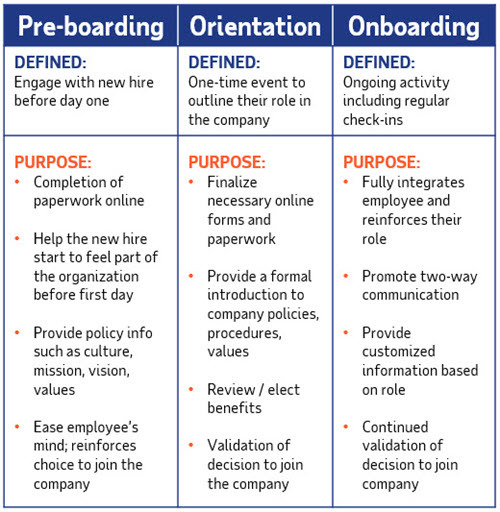Onboarding Strategies: 5 Tips to Win the Hearts and Minds of Employees from the Start

Employee engagement efforts should begin long before their first day on the job.
We are seeing employers of all sizes responding to current events and instituting new benefits, perks and support for employees. This also includes new strategies that are being put into place to find, grow and keep employees. All aspects of employment are being evaluated, everything from new types of employer and voluntary benefits – like pet perks and student loan repayment options – to flexible work schedules and unlimited vacation.
What is often overlooked is the opportunity to support retention and make a new employee feel part of the family right from the start. According to SHRM, 91% of employees will stay their first full year, and 69% of employees are more likely to stay for three years if they experience great onboarding.
Here are some tips on how organizations can improve their onboarding strategies:
1. Stay connected and consistent
One of the most important things is to stay engaged with a candidate so that they feel like they are part of the organization before their first day on the job. From a simple check-in, to sharing information on company values or mission, or even answering questions about benefits and their start date, it's critical to keep the connection alive. This effort will jumpstart a relationship between the candidate and your organization, as well as help alleviate the risk of potentially losing a candidate to another offer…or being "ghosted" before day one. Yes, it happens.
2. Tap into technology
Having an integrated onboarding system in place can help automate things like completing forms and paperwork quickly and easily online. It can also serve as another communication channel, which can be used to share information and reminders with new hires. For example, beyond automating paperwork, you can utilize the system to share news and information with a new hire before their start date. This can also help an employee feel a part of the team on day one as they can spend more time on meeting their colleagues and learning about their role versus sitting at a desk completing forms.
3. Have an onboarding program
Studies show that up to 20% of new hires leave within the first 45 days of employment. Yikes! That's why it's crucial to develop an onboarding program with regular check-ins and checklists (30, 60, 90 days and beyond) to monitor progress, empower new hires to ask questions, clarify any questions about their role, celebrate progress to date, etc. Some employers even institute a buddy system where a new hire is partnered up with a more tenured colleague to serve as an informal mentor to help a new hire feel part of the team and build their network early on. How great is that?!
4. Know the difference: pre-boarding vs. orientation vs. onboarding
The process of pre-boarding, orientation and onboarding for new employees is critical. Most people think onboarding encompasses everything, but in fact, there are three key steps:

5. Institute ongoing communications
Regularly communicate with new hires and existing employees to make sure they understand:
- The tools and resources they have access to
- Their role and how it connects to the company's mission
- How they will be measured, including where to go with questions
- News and information on organizational performance and milestones
Onboarding is not just the first-day paperwork and policy review. It's a process that should begin well before the new employee's first day and last long after.
To learn more about onboarding strategies for today's competitive job market, get our guide: The Human Touch Drives Onboarding Success



